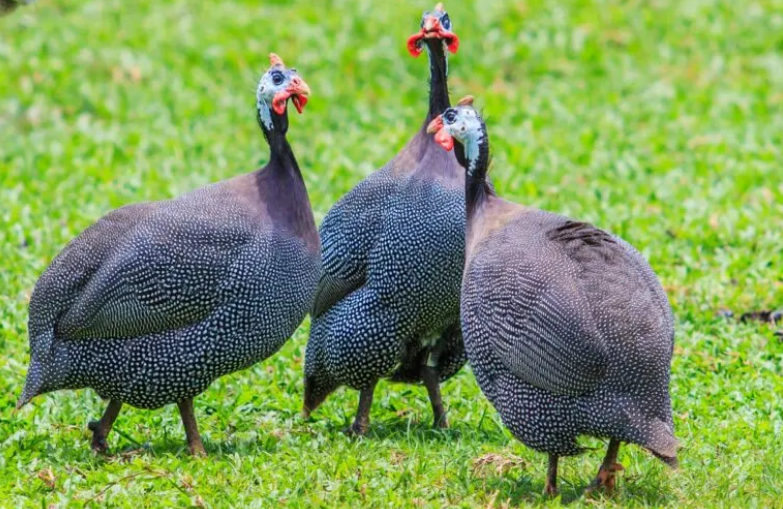Male And Female Guinea Fowl
Guineafowl are birds of the family Numididae that includes pheasants, turkeys, chickens and grouse. They are endemic to Africa and rank among the oldest of the gallinaceous birds. They are often kept for their pest control abilities, as well as for their flavorful meat and ornamental value.
Male guineas, called guinea cocks or cockbirds, are generally larger than females. They have more prominent wattles and larger helmets, which are bony growths on their heads. These helmets become more pronounced as males mature. Female guineas, known as guinea hens or hens, are slightly smaller and have smaller, less prominent wattles and helmets.
Male guineas have brighter and more vibrant feathers with striking patterns. Their plumage may include spots and stripes in various shades of white, black, and gray. Female guineas tend to have more muted and uniform colors.
Male guineas tend to have a louder and more frequent call, which can be described as a repetitive “chi-chi-chi” or “buckwheat” sound. They use their vocalizations to establish territory and warn the flock of potential threats. Female guineas have somewhow quieter calls and may use them to communicate with their chicks or to signal alarm within the flock.
Males are territorial and can become aggressive, especially when protecting their mates and nesting sites. They may engage in displays of dominance, including puffing up their plumage and strutting to intimidate rivals. Female guineas are primarily focused on nesting and caring for their eggs and chicks.
Both male and female guinea fowl have similar dietary habits. They feed on a diet of insects, seeds, small invertebrates and different plant materials.

Male vs Female Guinea Fowl: Key Differences
| Characteristic | Male Guinea Fowl | Female Guinea Fowl |
|---|---|---|
| Plumage | Darker, more vibrant colors | Lighter, more subdued colors |
| Helmet | Prominent bony helmet on the head | Smaller and less pronounced helmet |
| Wattles | Larger, more prominent wattles | Smaller and less noticeable wattles |
| Size | Slightly larger and bulkier | Slightly smaller and more streamlined |
| Neck ring | Wider and more defined neck ring | Narrower and less pronounced neck ring |
| Feather patterns | More distinct and pronounced spots | Spots may be smaller and less defined |
| Voice | Louder and more frequent calls | Quieter and less frequent calls |
| Behavior | More aggressive and territorial | Calmer and less territorial |
| Comb | Larger and more prominent comb | Smaller and less noticeable comb |
| Spur | Longer and more developed spurs | Shorter and less developed spurs |
| Reproductive role | Males mate with multiple females | Females lay eggs and care for the nest |
| Brooding behavior | Do not engage in brooding | Engage in nest-building and incubation |